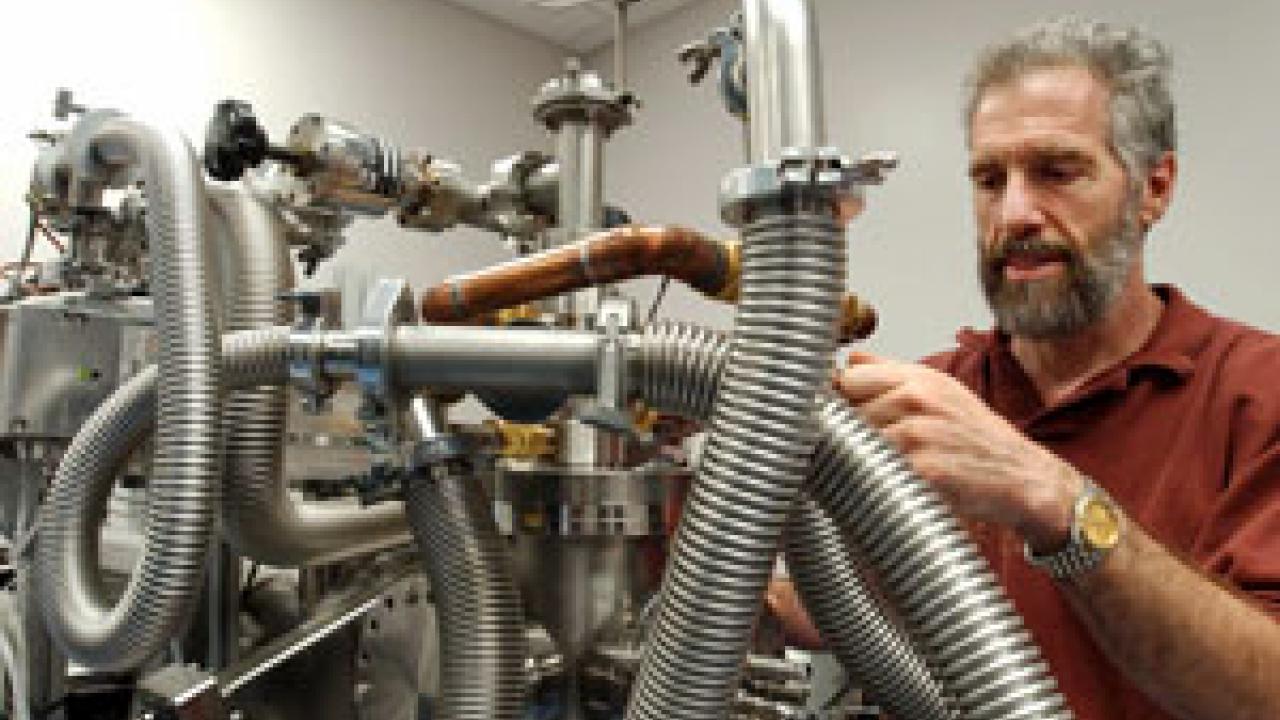With federal agencies showing a trend toward funding centers and programs directed at attacking large-scale problems, the Office of Research has established a new unit, Interdisciplinary Research Support, which will work with faculty to apply for large, complex grants and help them put together the applications.
"It has been my experience that faculty are much more successful in garnering complex, major research grants when assisted in the preparation of applications. I am very pleased to see the establishment of this new unit," said Virginia Hinshaw, provost and executive vice chancellor.
Barry Klein, vice chancellor for research, said, "A mission of the Office of Research is to catalyze the advancement of the research goals of UC Davis, and we are looking at proactive steps that will enhance our services to facilitate faculty research. This new unit is intended to not only to make the major grant application process easier for faculty from multiple disciplines engaged in complex endeavors, but also to strengthen the proposal itself."
That was good news for Anthony Wexler, who recently submitted an $8 million proposal to the U.S. Environmental Protection Agency (EPA) to study the health effects of fine airborne dust. Wexler engaged the services of Interdisciplinary Research Support.
"I had never done something like this before," Wexler said. "Their knowledge of how to put a big grant together was a very big help to me and the faculty involved in this research program."
The unit, headed by Richard Meisinger, will scout for new opportunities for funding from government agencies and the private sector; advise campus administrators on which opportunities to provide special support; bring faculty together from across campus to apply for large-scale, complex grants or grants that establish an interdisciplinary center of excellence; put together teams to write the applications and coordinate staff and faculty in making sure grant proposals get written and submitted on time.
Federal agencies such as the National Science Foundation (NSF) and the National Institutes of Health (NIH), which have traditionally funded much research through grants to single investigators or small groups, are increasingly funding larger, more complex and multidisciplinary grants. Besides emphasizing collaborations across physical, engineering, biological, and medical sciences, the NIH's "Roadmap" initiatives call for more collaborations with industry to ensure the development of products to solve health problems.
"Recent applications for interdisciplinary centers, such as the NSF-funded Center for Biophotonics Science and Technology, and for major projects such as the National Biocontainment Laboratory and the Regional Center of Excellence in Infectious and Emerging Diseases showed how complex and daunting these proposals can be," Meisinger said. Applications for such projects can run to hundreds of pages, he said.
"The new unit will provide administrative coordination and support to such challenging proposals, allowing faculty to concentrate on putting the best program content into their application," said Bernd Hamann, associate vice chancellor for research.
"We want to assure them that there will be a support infrastructure in place," he said.
Hamann identified nanotechnology, cybersecurity, air quality research, and mathematical/computational biology as initial areas of interdisciplinary research that campus groups are exploring.
Crossing disciplines
Wexler's proposal, submitted to the EPA in late August, is an example of a major interdisciplinary collaboration. The agency specifically requires an approach that integrates different disciplines to look at the health effects of ultrafine dust. The UC Davis team includes engineers, life and physical scientists, physicians, and veterinarians from across the campus.
"This campus is spectacular at doing this," Wexler said. "Organized Research Units and programs such as the Air Quality Research Center already bring together faculty from different departments. UC Davis' practice of using multidisciplinary graduate groups to train graduate students means that the campus also has a ready-made structure for collaborations," he said.
"Research areas that combine different disciplines present lots of new opportunities for scientists," Wexler said.
Those collaborations aren't limited to physical, engineering, and life scientists. For Douglas Kahn, director of the new Program in Technocultural Studies housed in the Division of Humanities, Arts and Cultural Studies, truly interdisciplinary research occurs when people don't just combine expertise but venture out in totally new directions.
"In the sciences, sometimes 'interdisciplinary' means two very specialized areas interacting," Kahn said. "The new undergraduate major in Technocultural Studies will explore the links between science, art, technology and culture."
Kahn hopes to add some joint faculty positions that cross boundaries, such as those between computer science and visual arts. For example, presenting complex data, such as those from digital imaging of cultural heritage sites, brings together technical, visual and aesthetic issues.
New structures
Since projects with large numbers of scientists working on a single 'big problem' are closer to the working environment of a company or a national laboratory than traditional academia, the campus needs to examine its support and faculty-reward structure for major grant participants, Hamann said.
"Leading these projects calls for a new type of academic leadership, as skilled in managing large teams of scientists as in working at the bench," he said.
"The majority of our graduate students needs to be trained properly for collaborative, team-oriented environments, since these environments, common to industry now, will also become more pervasive in academic settings," Hamann said.
Media Resources
Andy Fell, Research news (emphasis: biological and physical sciences, and engineering), 530-752-4533, ahfell@ucdavis.edu
